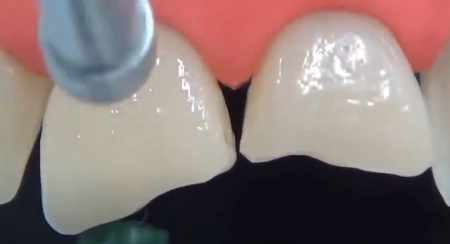When do you need dental restorations? As a result of trauma, oral disease or age, teeth lose their original appearance. Chips, cracks, darkening and unevenness of enamel, especially in the smile zone, bring psychological discomfort. Also such disorders of the tooth row influence the quality of food processing and diction. How to restore the beauty and functionality of teeth without resorting to serious and expensive prosthetic and implant procedures?
Purpose of Dental Restoration
Artistic restorations can restore the integrity and functionality of your teeth. This method allows you to preserve the existing units and extend their lifespan. What are the indications for dental restoration:
- Chips and cracks;
- Discoloration of enamel, including fluorosis;
- Bite problems;
- Diastema – a chipped tooth between the front teeth;
- cavities on the enamel surface.
All these problems can also be solved with dentures, but in this case you will need a more serious intervention and possibly depulpation of teeth. It is important to understand that after the removal of the nerve, the tooth will no longer be fed and will gradually decay. So restoration belongs to the simpler and least traumatic ways of restoration.
What are the advantages of aesthetic dental restorations:
- Fast – depending on the method of procedure, the service is provided in 1-2 visits, each of which takes no more than an hour;
- Effective – durable restored teeth function on par with natural teeth;
- Minimally traumatic – you may need to grind down the tooth surface to install the veneer, no preparation is needed when using composite;
- Aesthetic – with the right choice of restoration method and material, as well as quality workmanship, a restored tooth does not differ in appearance from the rest of the jaw.
The main disadvantage of aesthetic restoration of anterior teeth with composite materials is that it is not long-lasting. With this method, the restoration will last for 5-10 years, after which the procedure has to be repeated or the restoration has to be made. If the lifespan of the restored unit is important, it is worth choosing veneers. Ceramic onlays will last 15 or 20 years, but the cost will be much higher.
Methods of Dental Restoration
There are two methods – direct and indirect. The first involves restoration using composite materials. The peculiarity of the procedure is that all work is performed directly in the patient’s mouth. This method takes a minimum of time: 30-40 minutes is often enough for the restoration of one tooth. On the same day, you can gradually increase the load on the tooth, following the doctor’s recommendations.
The indirect method involves at least two visits to the clinic and restoration of the tooth with veneers or lumineers. The doctor will grind the tooth and make an impression, then the laboratory specialists will create a prosthetic structure, and only the next visit will lead to the placement of the veneer in the mouth. This option requires more time and specialist manipulation, but gives a better and more durable result.
Stages of Dental Restoration
The process may vary depending on the clinical case, but in general it looks as follows:
- Diagnosis. This stage begins during the patient’s first visit to the clinic. The doctor examines the oral cavity, offers treatment options, makes a plan and, if necessary, gives a referral for tests.
- Sanation of the oral cavity. Or preparation for the procedure. First you need to stop existing inflammatory diseases, such as caries. It is necessary to eliminate the possibility of bacteria getting under the composite, which can provoke inflammation. The sanation process also removes tartar and plaque, and before veneers can be applied to the front teeth, the tooth must be prepared.
- Application of the composite or creation of a veneer. The doctor insulates the mucous membrane of the mouth with a rubber dam, processes the tooth surface and deposits the composite material in layers. The composite material hardens and becomes durable when exposed to ultraviolet light. For veneers, the doctor chooses the shade of the future tooth, makes impressions and gives these impressions to the lab to fabricate the prosthetic restoration. During the next visit, the prepared veneer is placed on a special cement.
- Final treatment of the tooth. This step involves grinding and polishing the finished tooth, as well as giving it a natural shine.
Cosmetic restoration of teeth is not suitable in all cases. For example, if your molars are destroyed, it would make more sense to have a crown placed, and if there are significant changes in your bite, to undergo treatment with braces. The decision on the method of dental restoration should be made together with a specialist.






